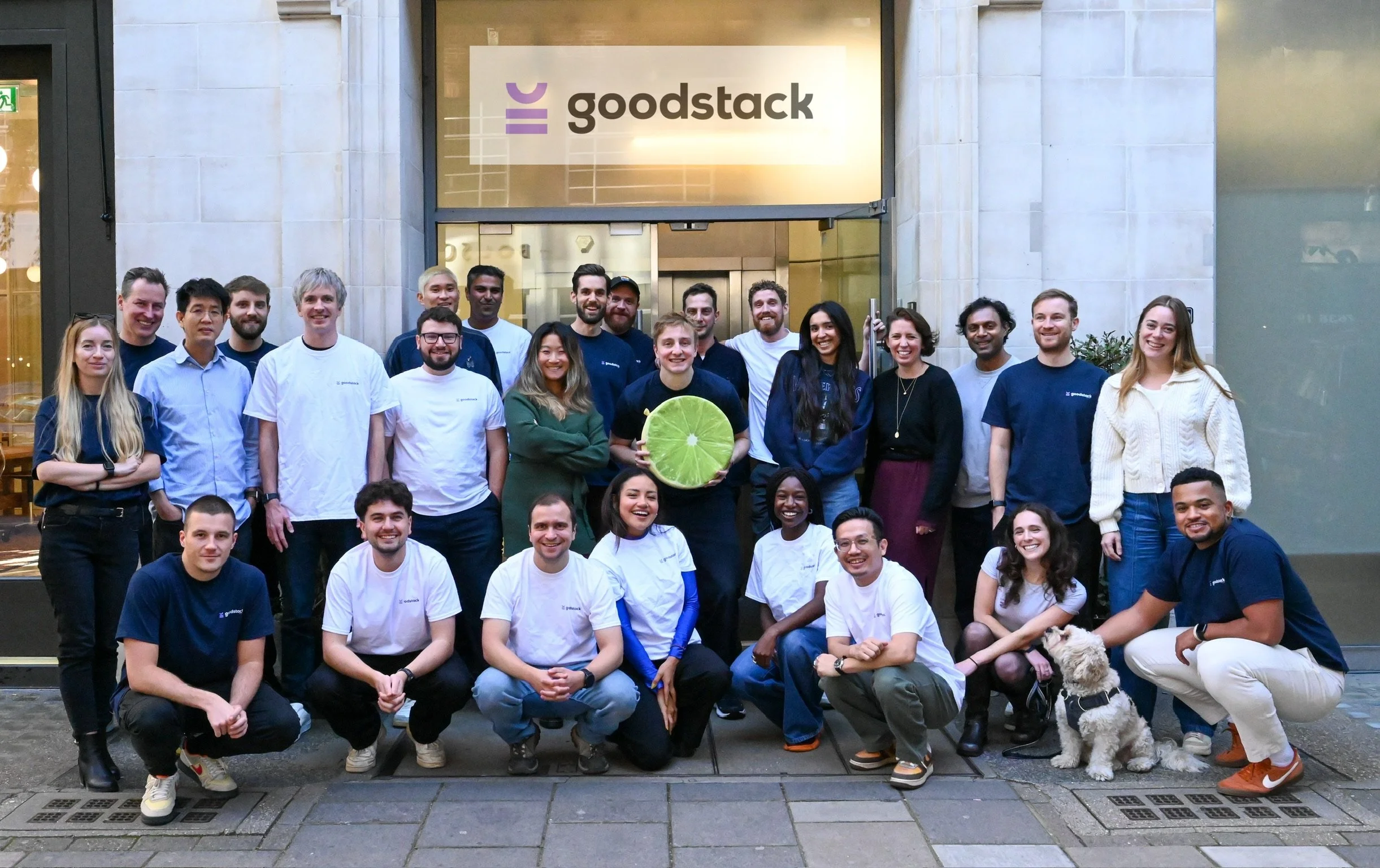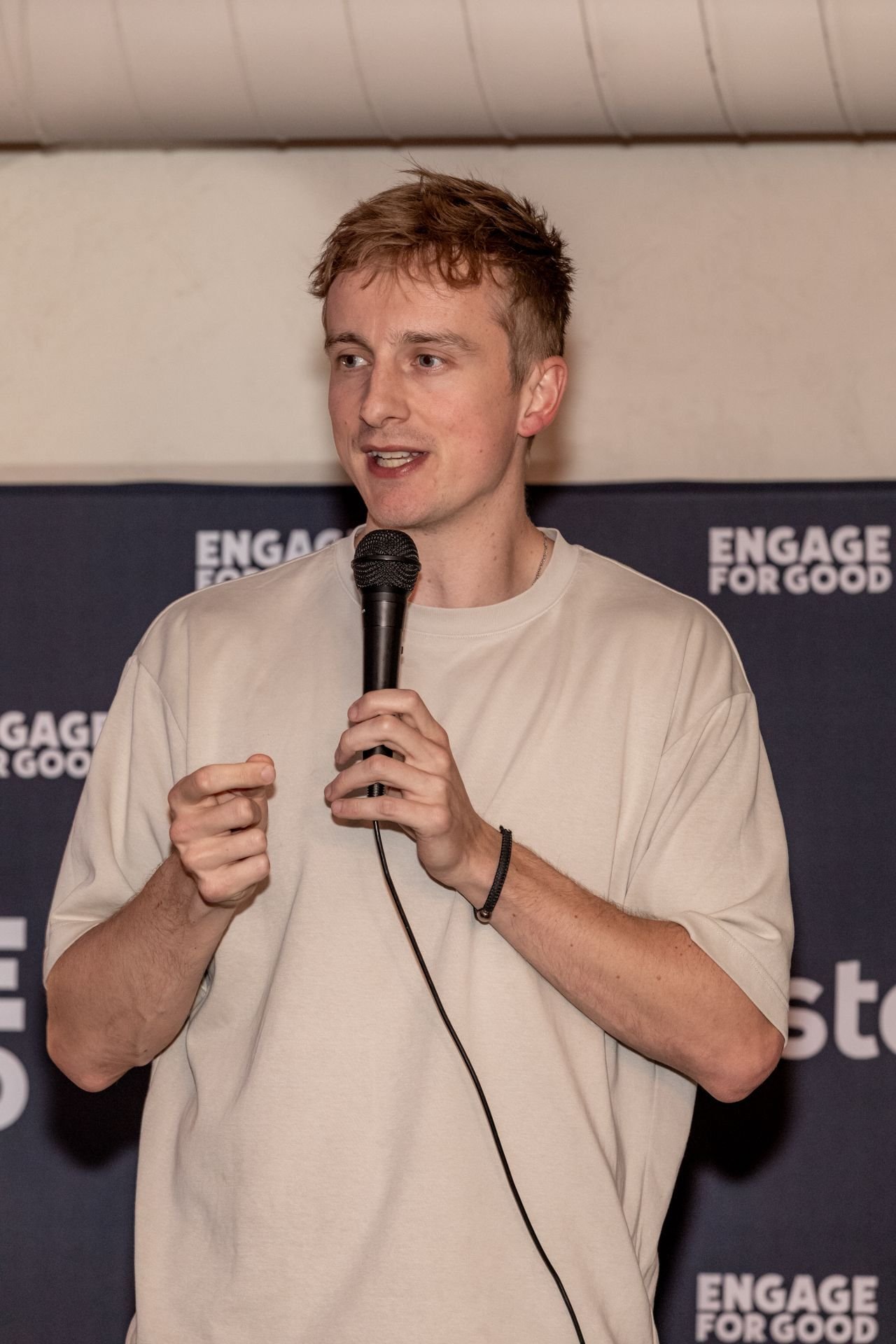How Goodstack Is Powering Generosity On A Global Scale
Goodstack Team | Goodstack
When Henry Ludlam started his career, he did not set out to become the world’s largest facilitator of charitable giving.
Yet somewhere along the way—between building donation APIs and mapping verification systems for nonprofits across 240 countries and territories—something remarkable happened: his company, Goodstack (co-founded with Stefan Greer), quietly built the digital infrastructure that now powers generosity on a global scale.
To date, Goodstack has processed over $5 billion in donations, a network of 13.5 million nonprofits and causes (they verify 100,000 organizations every week), and has facilitated donations to more than 240 countries and territories worldwide.
As Ludlam told me during our recent conversation, “Last year alone, we donated to close to a million organisations. I don’t think anyone facilitates donations to more good causes than Goodstack.”
It is a staggering claim — and one that holds up. In a world where philanthropy remains fragmented by borders, banking systems, and regulatory constraints, Goodstack has become the connective tissue of the global generosity economy. With clients like LinkedIn, Atlassian, HSBC, Canva, Zoom and many others, the company has quickly become the go-to partner for doing good globally.
Since rebranding from Percent to Goodstack in 2024, the company has attracted significant investor interest. It announced a $28 million Series A led by General Catalyst, with participation from several strategic investors. Those funds have fueled global expansion and the development of innovative, new AI-driven capabilities.
"GoodStack is a rare platform that creates a virtuous cycle -- one that propels nonprofits forward while simultaneously accelerating the businesses that serve them,” said Quentin Clark, Managing Director at General Catalyst. "Henry is a relentless learner who cares deeply about the mission and has the vision and creativity to build something that could fundamentally reshape how nonprofits operate."
Henry Ludlam, Founder at Goodstack
Building the Infrastructure of Good
“Goodstack was built to build good into everything,” Ludlam says, leaning forward with the quiet conviction of a founder who knows he is constructing something world-changing. “There should be no interaction you have in the world that doesn’t generate good. That’s the vision.”
That idea — to embed good into everything — is not a marketing slogan but a systems-level rethink of how giving operates in the modern economy.
At its core, Goodstack provides the infrastructure that enables any company, product, or platform to connect directly with verified nonprofits. Think of it as the ‘Stripe’ of social impact — a unified layer that makes philanthropy seamless.
Ludlam breaks it down into four key pillars:
Product Giving – When companies such as LinkedIn or Canva offer free or discounted versions of their software to nonprofits, it is Goodstack’s verification engine running quietly behind the scenes.
Customer Giving – Facilitating donations within consumer apps and platforms. “Imagine you’re donating through TikTok, or at checkout,” he says. “That’s us.” Goodstack recently powered the global #TeamWater fundraising campaign on TikTok, led by MrBeast in support of WaterAid.
Employee Giving – Enabling workplace donation and volunteering programs with customizable features to engage employees, like Atlassian’s Foundation Rewards.
Corporate Giving – Managing grants and social investment programs, the kinds one would expect to find inside a Fortune 500 CSR department.
By integrating all of these capabilities into one cohesive system, Goodstack allows brands, employees, and consumers to participate in giving in a unified, measurable way — turning purpose into infrastructure.
At its core, Goodstack provides the infrastructure that enables any company, product, or platform to connect directly with verified nonprofits
The AI Agent Named Maia
Perhaps the company’s most transformative innovation is what Ludlam describes as “the most impactful and material advancement in our work so far” — Maia, an AI-powered grant finder agent for nonprofits.
Every nonprofit verified through Goodstack can log in, describe what kind of funding it seeks, and within minutes, Maia scours public and private databases to identify suitable grant opportunities.
“She’ll come back minutes later and say, ‘I found five grants for you,’” Ludlam explains. “Nonprofits’ jaws drop. They’re like, ‘Oh my God, how would I ever have heard about this?’”
It is a small miracle powered by large language models — a glimpse of how AI, when applied thoughtfully, can democratize access to opportunity.
For nonprofits long burdened by the time, cost, and complexity of grant writing, this is transformative. As Ludlam notes, “They don’t want to always have to pay $10,000 for a consultant. LLMs are very good at searching through data. So we built a product that does that — and helps them apply.”
Dashboard example
Going Global from Day One
While many technology companies struggle to expand internationally, Goodstack was designed to be global from its inception. “Because I’m British, we had to be international from day one,” Ludlam laughs. “We said, we’re going to make it as easy to donate in England and America as it is in Australia, New Zealand, or Fiji.”
That decision to tackle giving worldwide from the start enabled Goodstack to service the world’s largest donors from day one and distinguished them from localized players. Building a near instant verification compliance network across 240 jurisdictions was, as Ludlam admits, a “big, scary lift.”
But that lift is now the company’s competitive moat: a verified network of 13.5 million nonprofits and causes, able to receive funds or product discounts almost anywhere on Earth.
The result is a frictionless experience for both donors and doers — a universal API for good.
Why the World Needed a Platform Like Goodstack
When asked what has powered Goodstack’s rapid growth, Ludlam points to two converging forces.
“Nonprofits are getting digitally switched on,” he explains. “And global companies are wanting to embed giving across their whole company — not just employees. They want everything.”
In other words, purpose has moved from the periphery to the platform. Corporations no longer view social impact as a side project; they now want it embedded into their products, cultures, and customer experiences.
Meanwhile, nonprofits — facing increased demand and reduced grant funding — are ready to meet that demand digitally. They just need a bridge. Goodstack is building that bridge.
Scaling Through Artificial Intelligence
Goodstack’s ability to scale this rapidly — facilitating billions in donations and verifying millions of nonprofits — would have been impossible without artificial intelligence.
“If we had to scale what we were doing with humans, it would’ve been impossible,” Ludlam says. “Through leveraging AI, it’s enabled us to scale and reach so many more nonprofits.”
This philosophy runs deep: AI not as a replacement for human judgement, but as an amplifier of efficiency. It represents a subtle but profound shift in how we think about philanthropy. Instead of more fundraisers or intermediaries, the true unlock is data, automation, and trust — a digital backbone that makes generosity scalable.
A Global Network of Trust
At a time when regulation, fraud, and donor fatigue are eroding confidence in charitable systems, Goodstack’s verification engine has become one of its most critical assets. Each week, the company reviews upwards of 100,000 nonprofits to confirm legitimacy by answering three key questions:
Is it a registered nonprofit in its jurisdiction?
Is there any indication of illicit activity
Does the applicant genuinely work for the organization in question?
This rigorous process ensures that every donation, grant, or product discount flows to a verified organization doing meaningful work — whether it is a school in Kenya, a food bank in Kansas, or a women’s cooperative in Kathmandu.
Trust, in short, is the new currency of philanthropy. And Goodstack is minting it at scale.
What’s Next
As Ludlam puts it, “Our mission is to revolutionize how the world does good. We’re building the infrastructure for that revolution — so we can set a positive future for humanity.”
In essence, Goodstack is constructing the internet protocol for good — an invisible yet essential layer that makes generosity borderless, verifiable, and seamlessly embedded into everyday life.
In an age where algorithms dictate everything from advertising to attention, it is refreshing to encounter a company using code to drive compassion.
At Conspiracy of Love, we help changemakers tell their most powerful stories — stories that inspire action, build movements, and create lasting impact.
Find out more about our Values-Driven Storytelling and GPS to Purpose workshops, and how we can help you scale your impact.




